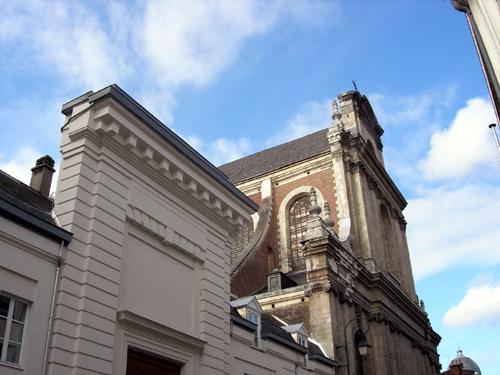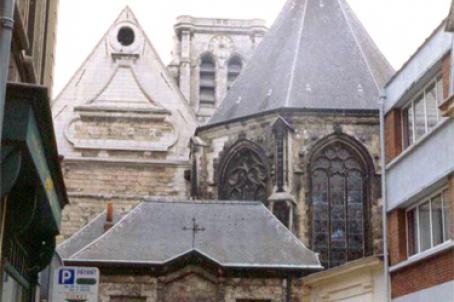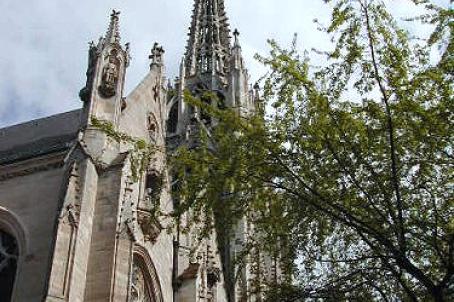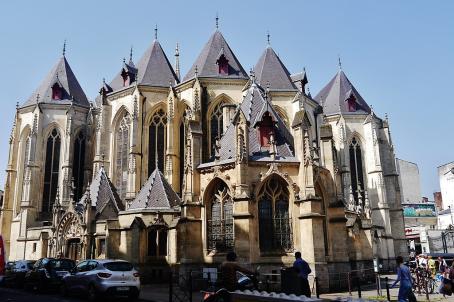Saint-Etienne Church, Lille
The present church is built on the site of the first Jesuit chapel built in 1610 and destroyed in 1740 in a fire. In 1743, the architect Dominique Delesalle drew up the plans for the new church and the foundation stone was laid under the direction of the architect François Joseph Gombert, who had already worked on the church of the Convent of the Discalced Carmelites in Lille.
About this building
The 29-metre-high façade of the church is made of dressed stone. Its style, resolutely classical, is also inspired by the baroque style of the Gesù church in Rome. The interior of the church, 61 metres long, is sober and luminous and follows a Latin cross plan. The church has three naves, all three ending in semi-dome and is lit by 32 semicircular bays decorated with stained glass windows made by Charles Gaudelet between 1854 and 1862.






